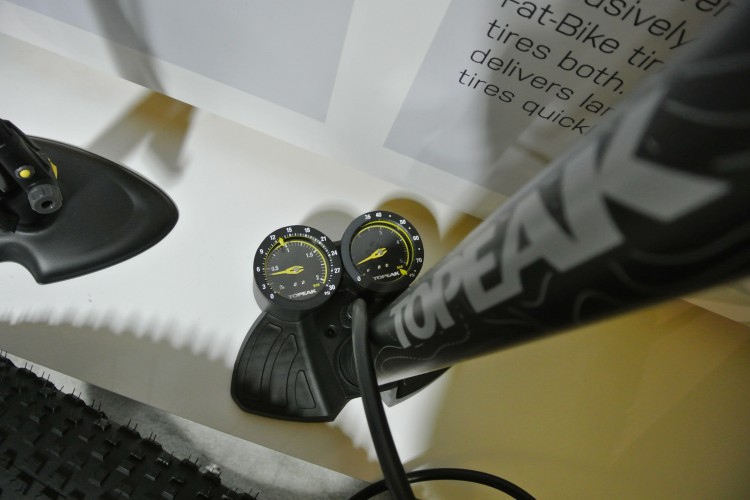Accidents happen. Unfortunately, sometimes they happen when we are wearing expensive clothing that is easily torn. Recently I took a digger on an ice patch while descending on my fat bike, and my backside was raked across a small rock garden. I had a nasty bruise where the sun doesn’t shine (I’ll spare you the photo) and my clothing was torn, including my waterproof Refuge Shell pants from Shower Pass.
Knowing that many of you own similar garments to ride in winter, and that occasionally these get torn, it is far cheaper and easier to repair them yourself than sending them off and paying someone else to do it for you.
Before you get started, you will need a few things that will cost about $20, which you can re-use should you unluckily tear a waterproof garment a second time.
Things you will need before you start this repair:
- Tape
- Marker
- Scissors
- Gore Tex patch
- Seam Grip
- Cotol-10
- Small brush
- Acetone
- Nitrile or latex gloves
- A well ventilated area

1. Clean your garment. You may have to hand wash the item, as throwing it in a washing machine may rip the puncture/tear more. At the very least, clean the area around the tear thoroughly, even if you do not launder the entire garment.

2. Place a layer of tape on the outside of the garment to hold the torn pieces together. Duck tape bonds well, but painters tape will come off more easily.

3. Turn the garment inside out. Locate the tear and ensure the torn pieces are approximated as well as they can be after you taped them. If not, start again.

4. Mark the area with a marker to make a patch using a guide. Using a roll of tape to make a circle, or something similar, helps. It is best to apply patches that are round, or at least use rectangles with rounded edges, as they are less prone to snag and tear off again.
5. Use the template (i.e. tape roll) to cut a piece of GoreTex or similar material at least 2cm larger than the puncture or tear. The patch or fabric that you use should be identical to the space you marked on your garment.
6. Place the patch over the tear to ensure that the size is correct. Ensure that the patch will adequately cover the tear.

7. Mix Seam Grip and CoTol-10 in a 10:1 ratio in a disposable container in a well-ventilated space. This is your “glue.” It is toxic and potent, so use a respirator if you have one. At the very least, do this in an open space with a fan. Cotol will speed the curing process considerably, but is not mandatory. Seam Grip alone will work, but it takes longer to dry.

8. Paint the patch with this mixture. Ensure that you have something underneath the patch while painting so that you do not get your working surface covered in glue.
9. Paint the edges of the tear on the garment with the mixture.

10. Allow the painted patch to sit for 15 minutes.

11. Use the knuckle test to check the tackiness of the glue. With a gloved hand, use your knuckle to see if the glued surface is tacky. It should stick, then come away cleanly. If it sticks and you have to peel it off of your knuckle, allow the patch to sit for a few more minutes and test again. If it is completely dry, use acetone to wipe the glue and start over. When it passes the knuckle test, it is ready to use.


12. Apply the patch to the garment where you made the markings for the template. Apply from one edge if possible, and roll the patch towards the outside to retard crinkling or air bubbles.

13. Press the patch in all directions on a hard surface to ensure a good seal with no air bubbles. Do this for several minutes and make sure that it lies completely flat with the garment surface.

14. Paint the edges of the patch with the Seam Grip/Cotol 10 mixture again. You are sealing the edges and reinforcing the patch. This also helps prevent the edges from rolling or snagging later. Let this coat sit for 10-15 minutes. Apply a second and even a third coat several minutes apart to completely seal the patch.

15. Allow to cure for approximately 24 hours. Go have coffee. Enjoy life. Let chemistry do its thang.
16. Once dry, turn the garment right side out.

17. Remove the tape and hope for the best. If the tape sticks, gently work to remove it. Rubbing alcohol or acetone may help, but be careful not to get it inside the patch! You can also use acetone to clean up the mess.

18. Paint Seam Grip on the outside of the garment over the puncture to fortify waterproofness.

19. Allow to cure, then feel free to test your handiwork with a squirt gun, shower, or fire hydrant.
20. Keep the rubber side down, and enjoy your bike!
Your Turn: Do you have any other tips for repairing waterproof fabric?



















